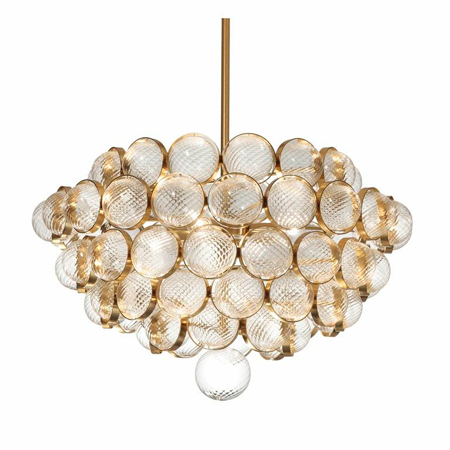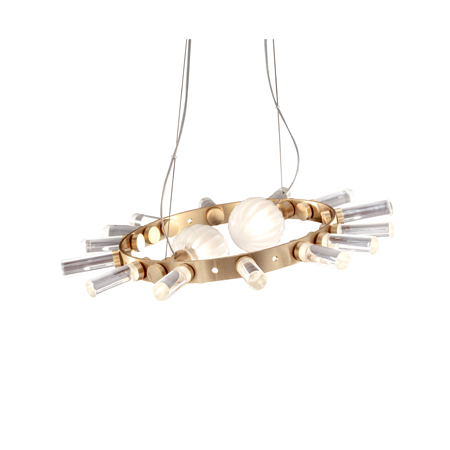With the second edition of EDIT by designjunction underway at Palazzo Morando, we talk to the Italian lighting brand’s Creative Director about their new family additions
Baroncelli have built a reputation on hand-crafted arresting lighting designs from traditional Murano glass since designer Rinda Baroncelli established the company in the early 1990s. In 2004, her son Giovanni Corrado joined the company as Creative Director, and has continued fostering this combination of heritage craftmanship with design innovation.Currently exhibiting at EDIT – curated by the team behind designjunction – in the spectacular setting of the eighteenth century Palazzo Morando, Giovanni took time to talk to us about the new series of Flexus pendants they’re exhibiting, and their growing families of lights.
What is it about EDIT that fits with the Baroncelli brand?
Designjunction is very much about relevant design, it’s a great snapshot of design today in practice. The mix of brands is refreshing and this year the show is taking place at Palazzo Morando which is a stunning venue.

Above: The Atomos pendant, which makes its debut at the Salone
How do the new lamps expand and push the Flexus and Saturno families in new directions?
Saturno is arguably Baroncelli’s most popular piece, and the new iterations have been created to showcase the different applications of this versatile design. It’s also Baroncelli’s signature piece, so the new updates were also produced with existing fans in mind, as exciting updates of this popular design. The new finishes are metallic gold and copper, both of which have a reflective quality that accentuates the light.
The Flexus family shows how basic components can be built up to create bespoke lighting solutions that are luxurious but also celebrate industrial design. The first Flexus designed used multiples of the single curve unit, with these new iterations we have added other base components such as the circle. This has allowed us to create much larger pieces with a bigger impact, the decorative nature of the pieces has also become more interesting and the designs make a big statement with the lights on or off.
The lamps feature hidden LEDs, what does hiding this detail do from a practical and aesthetic perspective, as well as from an imaginative one?
Using LEDs has transformed the essence of the lamp, using bulbs meant we had to cut into the lines of the design – LEDs have allowed us to create uninterrupted shapes which really changes the beauty of the designs.

Above: The Saturno LED pendant in polished copper
With the Flexus in particular, the quality of the LED combined with the metallic finish gives the light an almost candlelight-quality, creating an enigmatic light source with the piece glowing.

Above: Flexus pendant
How do your design objectives communicate an Italian aesthetic?
The most relevant link to an Italian aesthetic would be to Italian architects of the 1950s and 60s. Our designs translate these industrial design principles into design objects.
Building on that, how does the company marry tradition and innovation?
We believe in the quality of craftsmanship and appreciate this in the traditional sense. However, our brand is very much about updating these processes and systems with modern materials and a contemporary outlook on design.
What else are you looking at doing during the Salone?
The university in Milan always has an interesting programme and I’m also looking forward to seeing the Where Architects Live exhibition at the Fiera. Wallpaper* Handmade is an obvious highlight, but always showcases a great range in craft and creativity.




